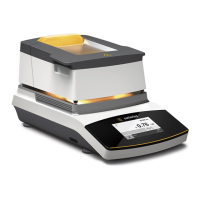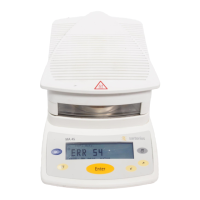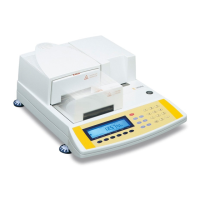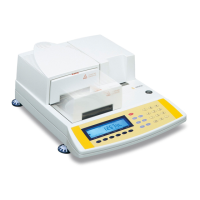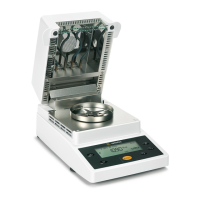The quantity of reflected IR rays depends
to a great extent on whether the substance
is light or dark-colored.
Dark Substance Light Substance
Low Reflection High Reflection
How the rays penetrate the sample
depends on the sample’s degree of light-
transmitting capacity. If the degree of
light-transmitting capacity is low, the rays
can penetrate only the uppermost layers
of the sample. The heat conductivity of
the sample dictates the degree to which the
heat can be transmitted to the underlying
layers. The higher the conductivity, the
faster and more uniformly the substance
is heated.
The substance should be applied to the
sample pan in a thin, even layer. A height
of approximately 2–5 mm for 5–15 g
substance weight has proved to be ideal.
Otherwise, the sample will not be dried
completely or the analysis time will be
unnecessarily extended, a crust/skin will
form on the surface of the sample or the
sample will scorch, and the analysis results
obtained will not be reproducable, and
therefore, cannot be used.
Incorrect Application of a Sample
When preparing a substance for analysis,
you should use methods that do not
generate heat so that the sample does not
lose moisture before it is analyzed.
Perform initial analysis of a new substance
to test how the IR rays are absorbed by the
sample and converted into heat. The
printout of the intermediate values of the
drying process provides you with this
information at an early stage.
Experience has shown that the temperature
setting selected during the infrared
drying is usually lower than the tempera-
ture setting used when working with
a drying oven.
In many cases, the fully automatic shutoff
mode will meet your requirements.
If the final result is higher or lower than
expected, try varying the temperature
setting before resorting to a different
shutoff parameter.
When analyzing samples that lose their
moisture only very slowly or when operat-
ing a cold moisture analyzer, the fully
automatic mode may end the drying rou-
tine too early, if it does not detect any
analyzable progress in the drying routine
under these conditions. In this case, pre-
heat the moisture analyzer for 2–3 minutes
before starting the drying routine or select
a different shutoff parameter.
The Sartorius Moisture Analyzer
Applications Guide will provide you with
important information on the use of
your moisture analyzer.
26
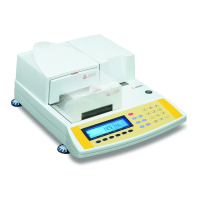
